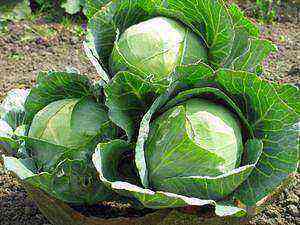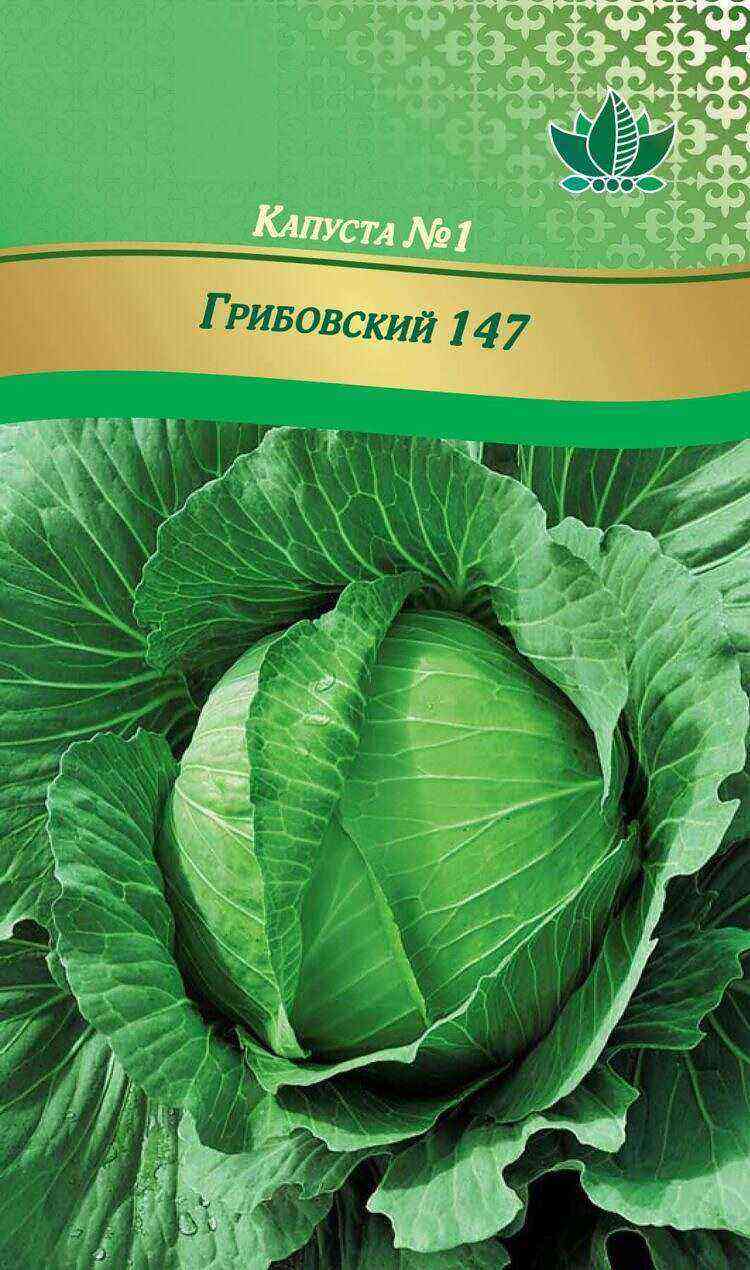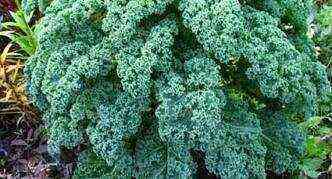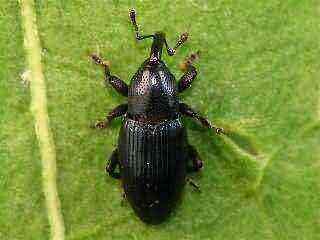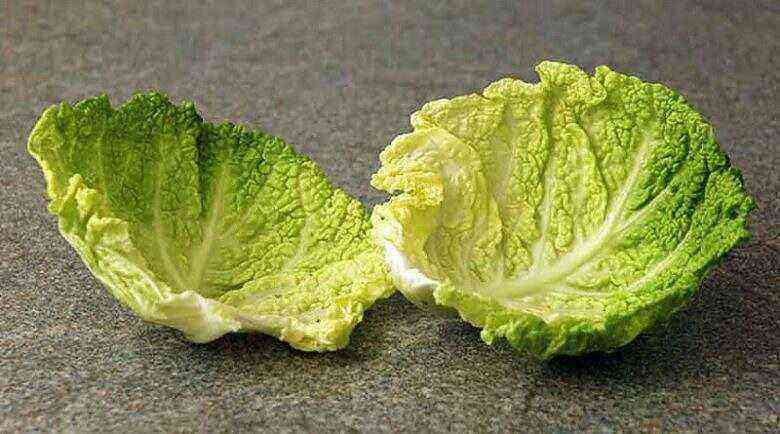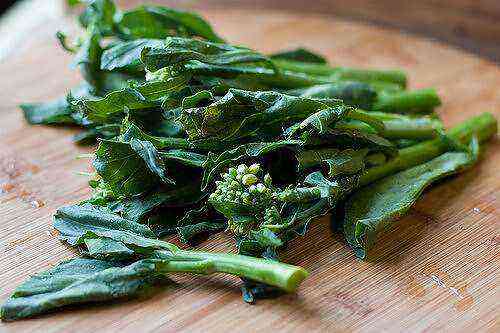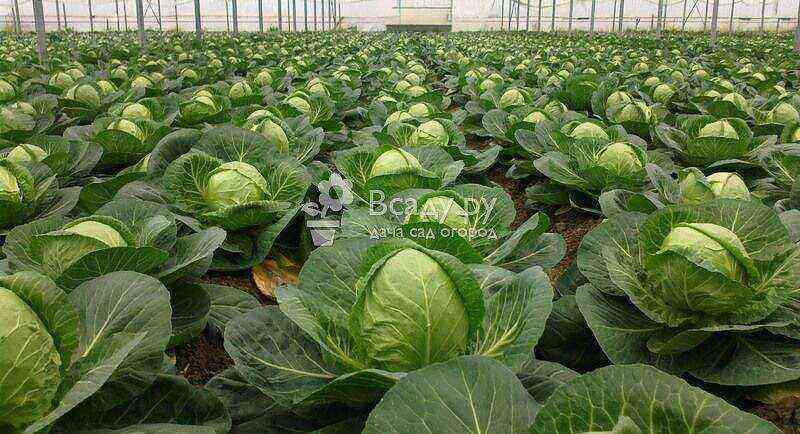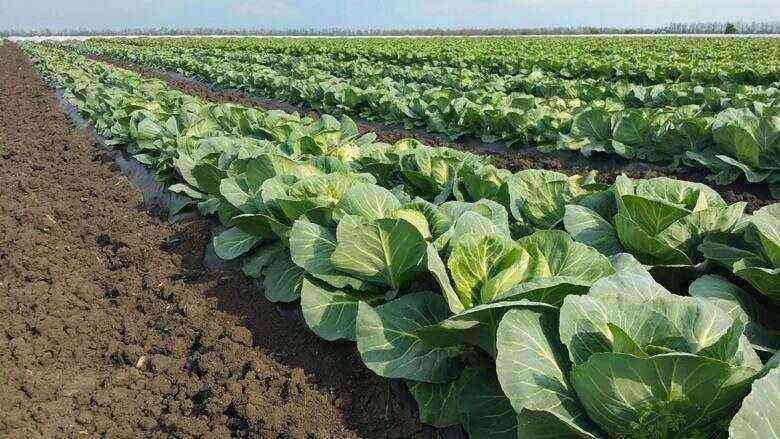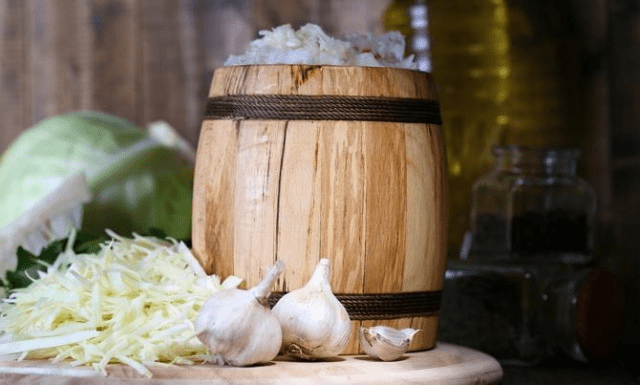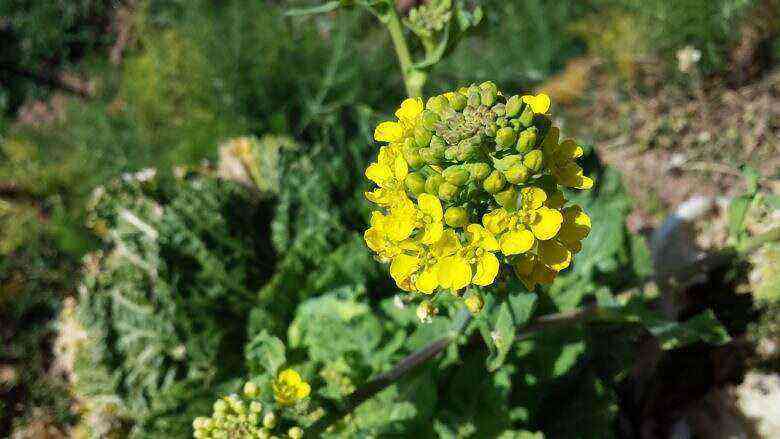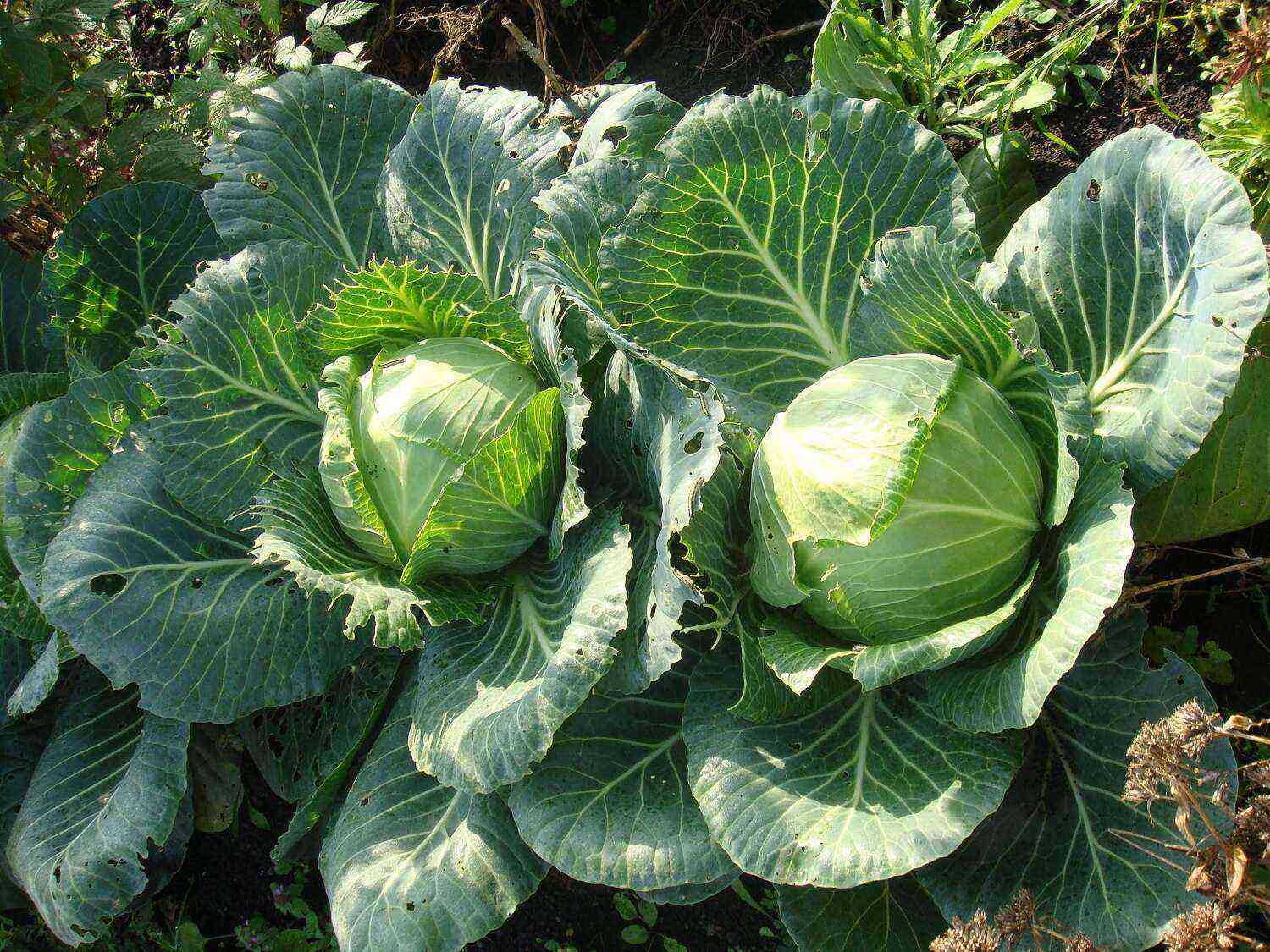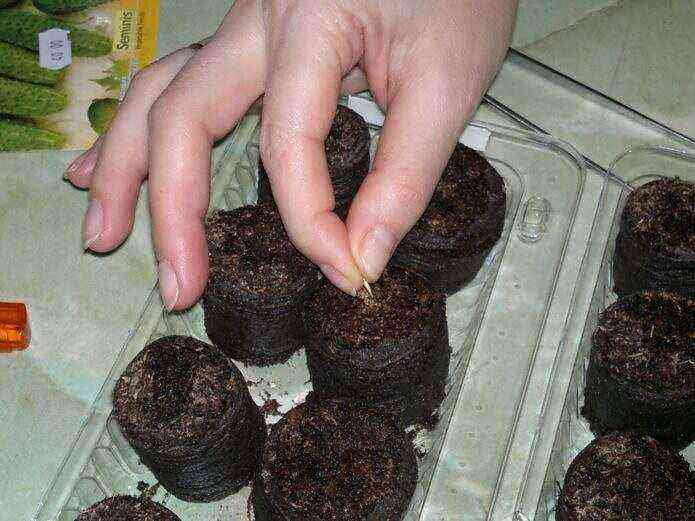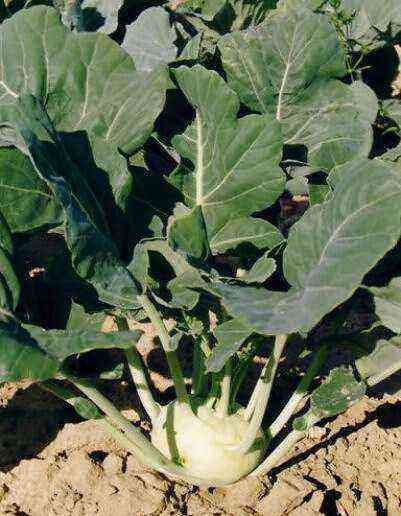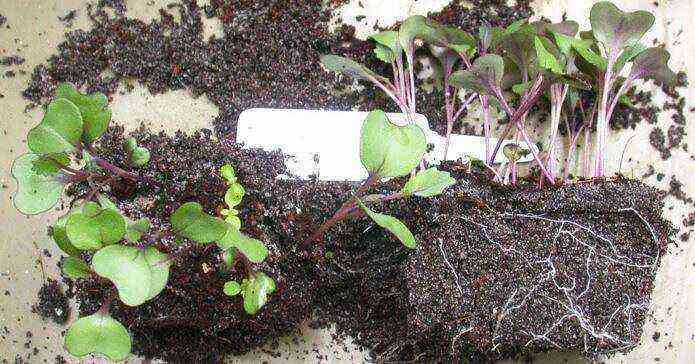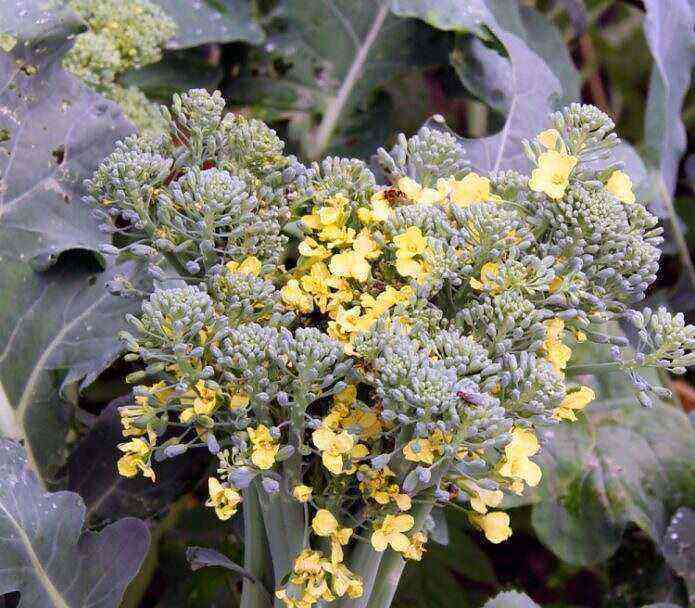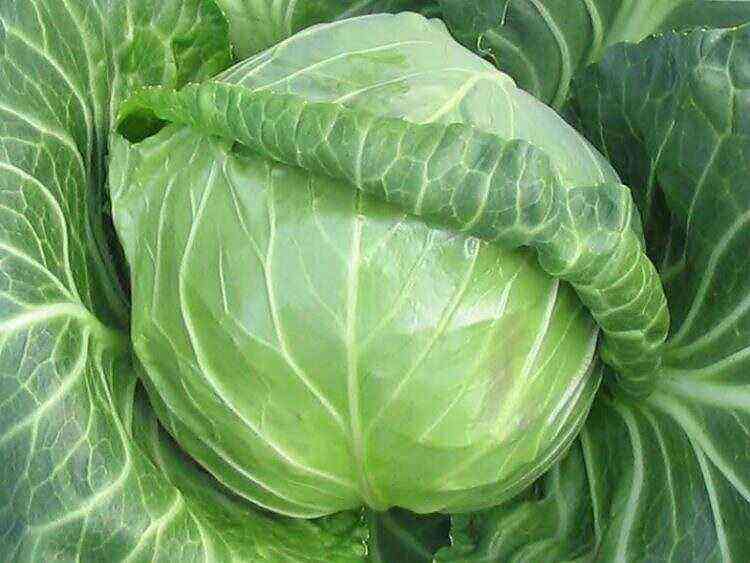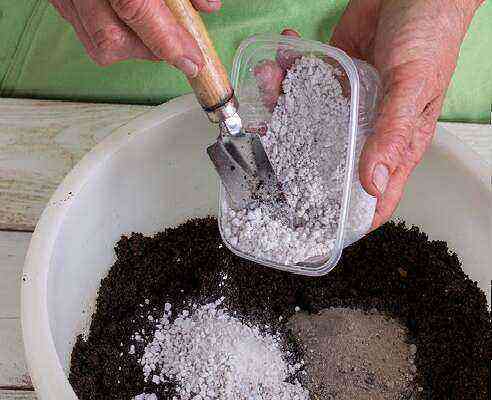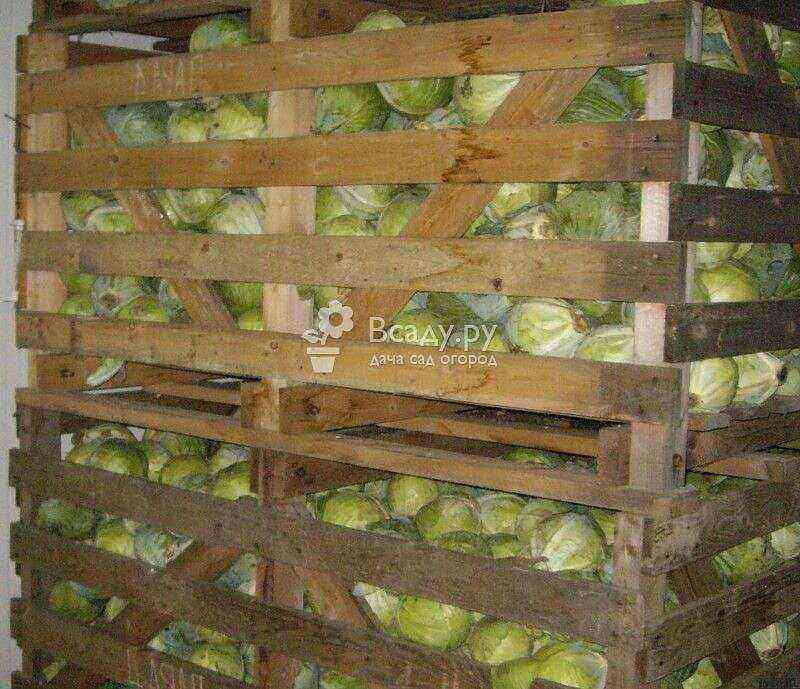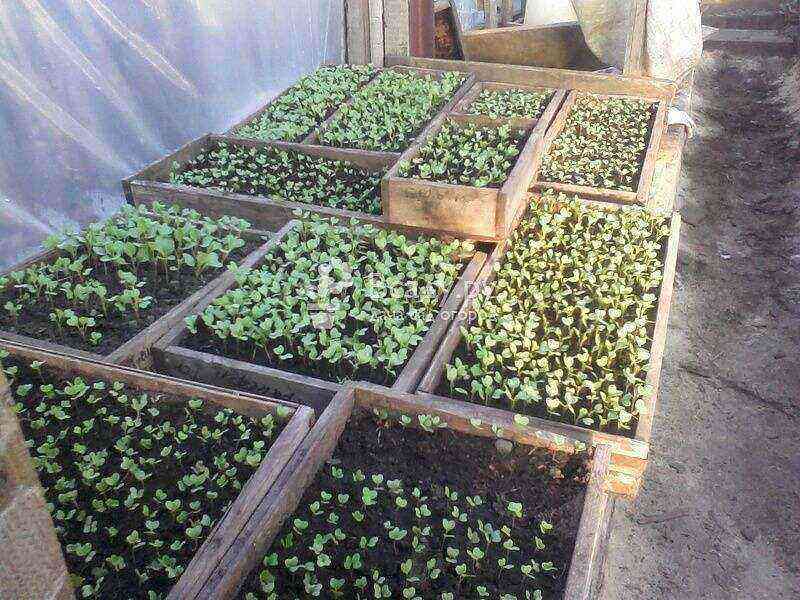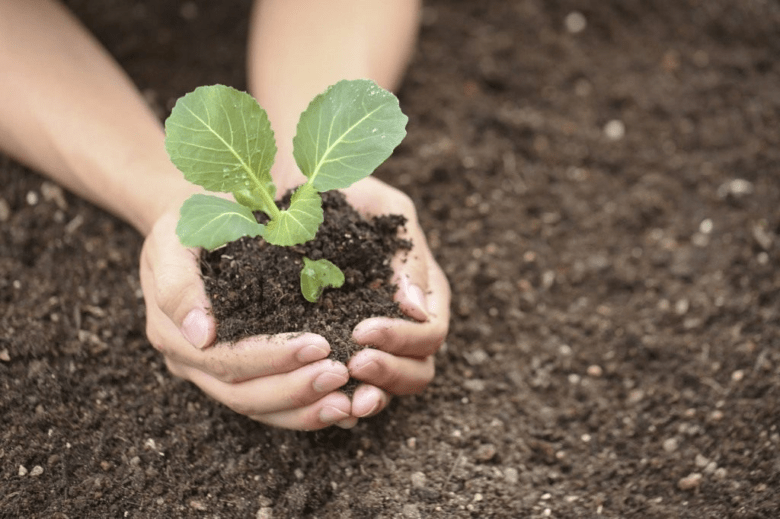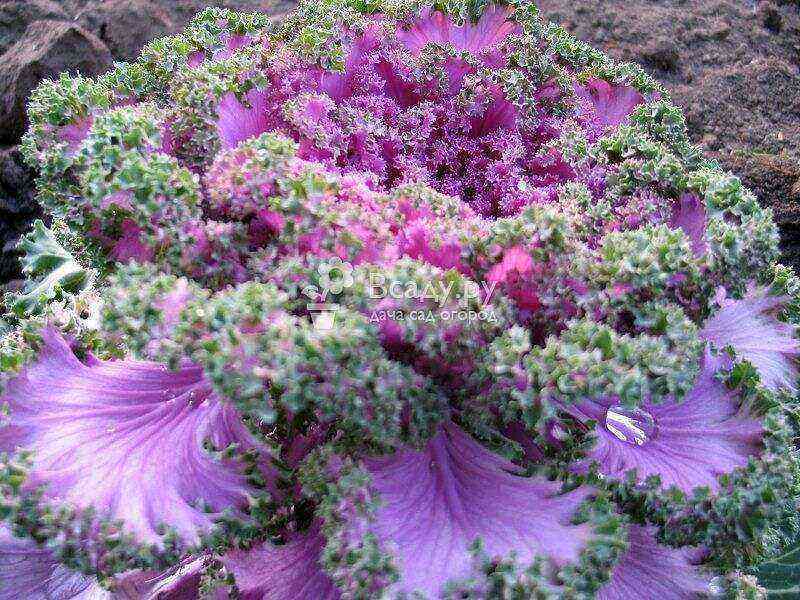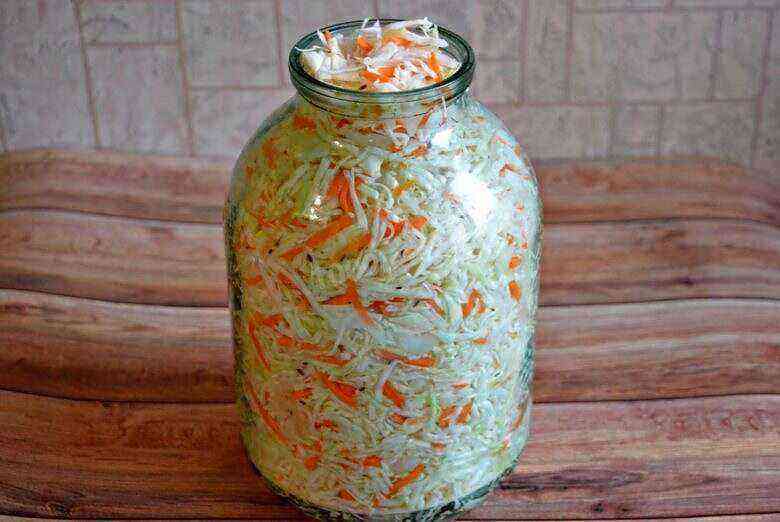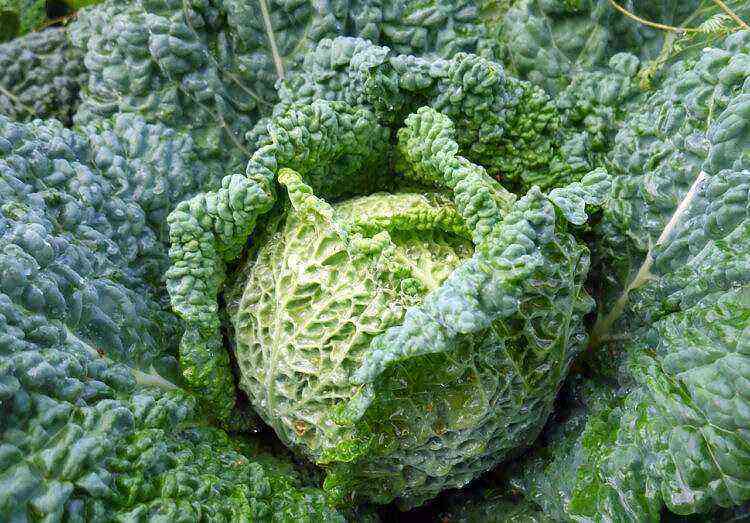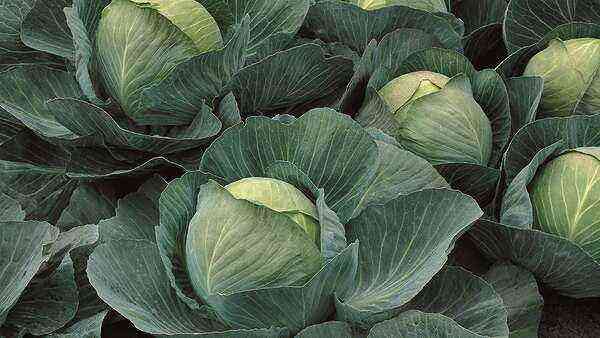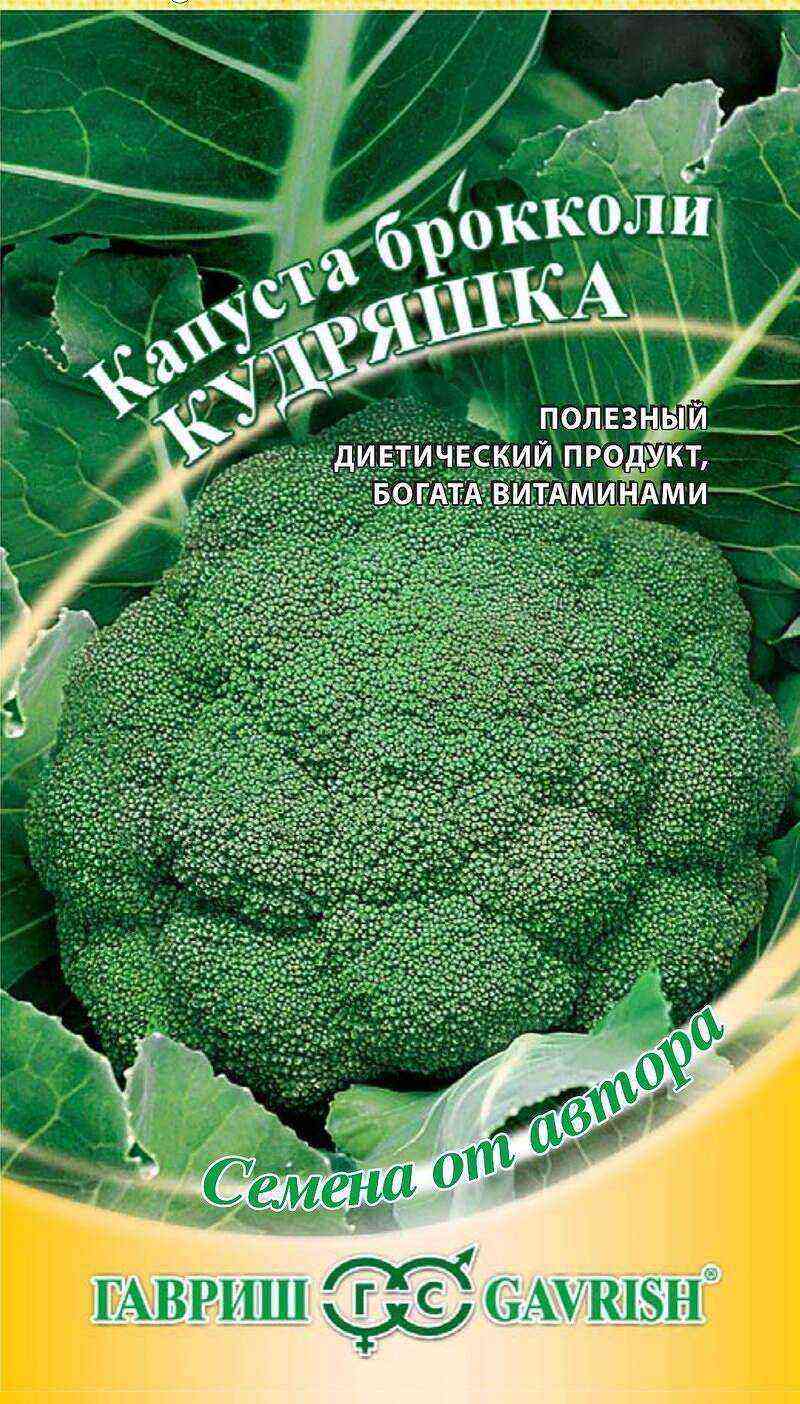With the onset of cold weather, most plants in garden plots lose their attractiveness. But the bright, unique color of ornamental cabbage at this time is shown in full force. Therefore, wild cabbage is rightfully the queen of the autumn period. Although initially it was perceived exclusively as a fodder crop. Planting and caring in the open field or growing ornamental species at home is not a difficult task. And how cabbage of some varieties blooms is just a sight for sore eyes. So what is a decorative cabbage flower.
A bit of history
Ornamental cabbage became famous in Ancient Greece. They began to grow it, and then brought it to the Balkan Peninsula. Later – to Europe. But the biggest contribution to the popularization of this plant was made by Japan:
- breeders have developed more than 10 new varieties;
- the owners of the estates decorated their large houses with cabbage.
Interestingly: on the Balkan Peninsula, ornamental cabbage had a special status, because it was believed that the drops of sweat of the harsh god Jupiter made it grow.
In Russia, these types of cabbage did not become popular immediately. Practical people preferred to grow white cabbage, common, to eat. The flowers that look like cabbage were not immediately appreciated.
Description of ornamental cabbage
Brassica or, in other words, ornamental cabbage, belongs to the Cruciferous family, headless species.
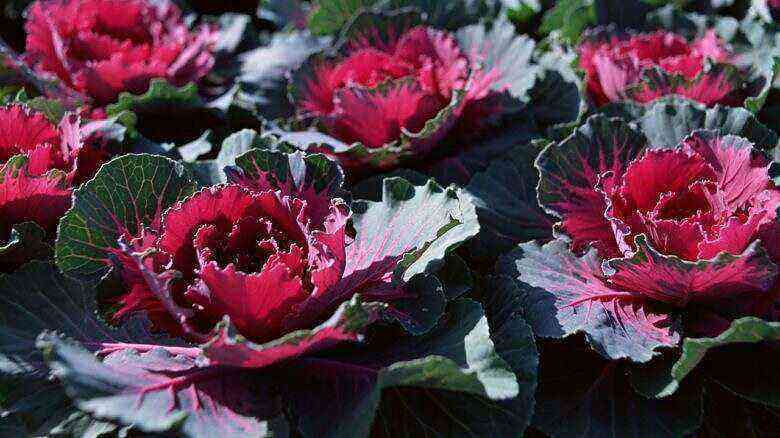
It’s important: Can ornamental cabbage be eaten? despite the “decorative”, cabbage can be eaten in the same way as Savoy, Brussels sprouts, cauliflower, white cabbage. The taste is similar, but the dishes are more interesting due to the unusual colors.
Ornamental cabbage is edible, these flowers taste like bitter cabbage, but if you cut off after the first frost, the unpleasant aftertaste goes away and becomes a little sweet. The leaves are rich in vitamins and minerals for immunity.
- Selenium… Essential for skin, hair and bones, prolongs youth. It is 3 times more than in ordinary cabbage.
- In ornamental cabbage, a large percentage folic acid, potassium, calcium, magnesium, proteins, vitamin K. All this is useful for immunity, removal of toxins, strong bones.
- Vitamin C… It is he who is responsible for ensuring that the body copes with diseases.
- Iron, vitamin A, riboflavin… These elements are required for the work of the heart, blood vessels and gastrointestinal tract.
Moreover, in ornamental cabbage, as in white cabbage, there are many antioxidants that fight inflammation and prevent the development of pathologies.
Characteristic:
- height: from 15 to 120 cm;
- leaf size: from 15 to 50 cm in length, up to 20 cm in width;
- form: smooth, corrugated, wavy, dissected;
- socket colors: purple, yellow, white, burgundy, violet, pink, mother of pearl.
But the main thing in ornamental cabbage is a leafy colored rosette, which retains a beautiful appearance down to -10 ° C. At this time, flowers, especially annual crops, have already withered, and brasika continues to delight the eye. Therefore, the best option would be to arrange in a flower garden, and not in a garden bed.
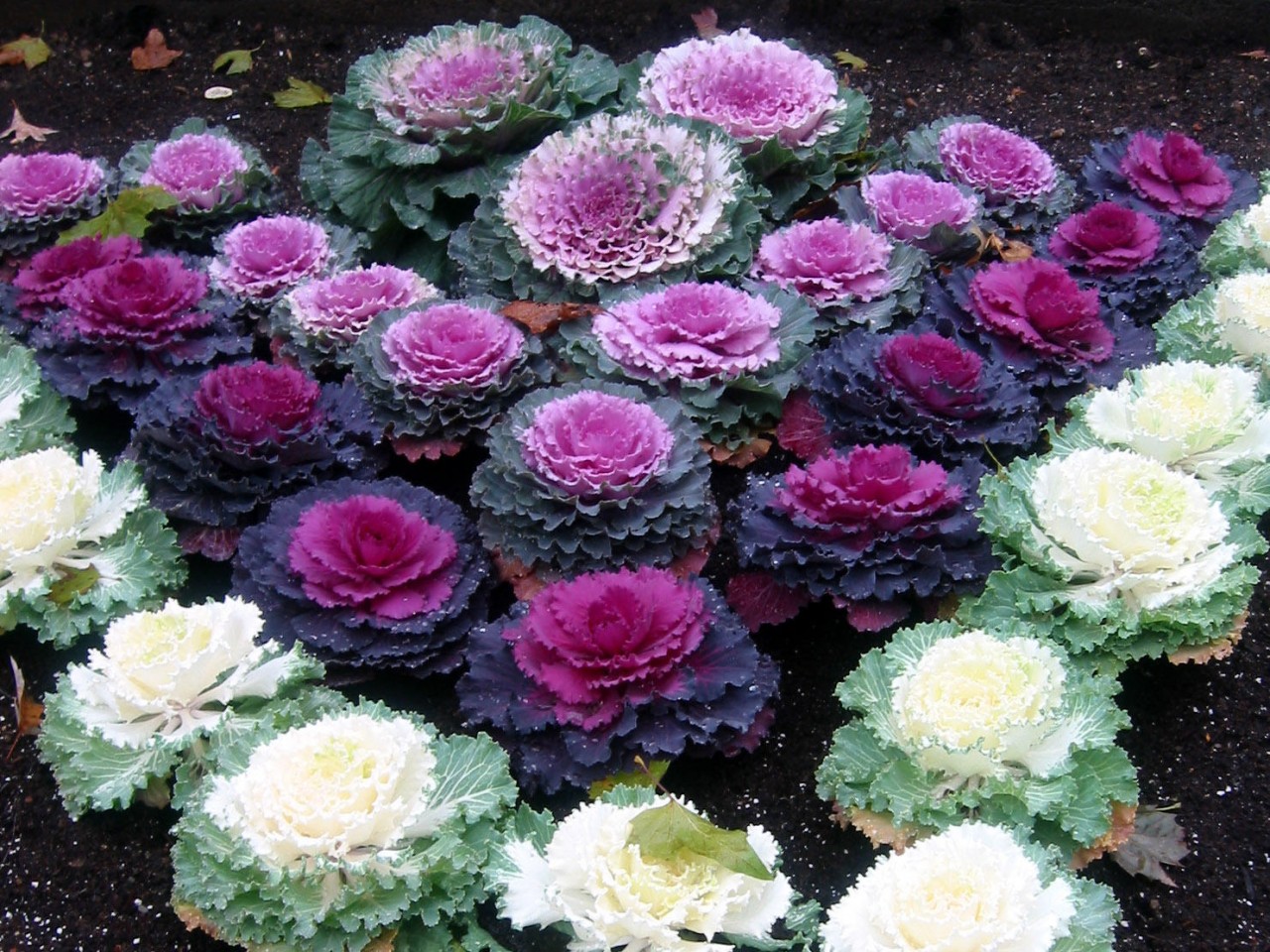 Various varieties of ornamental cabbage
Various varieties of ornamental cabbage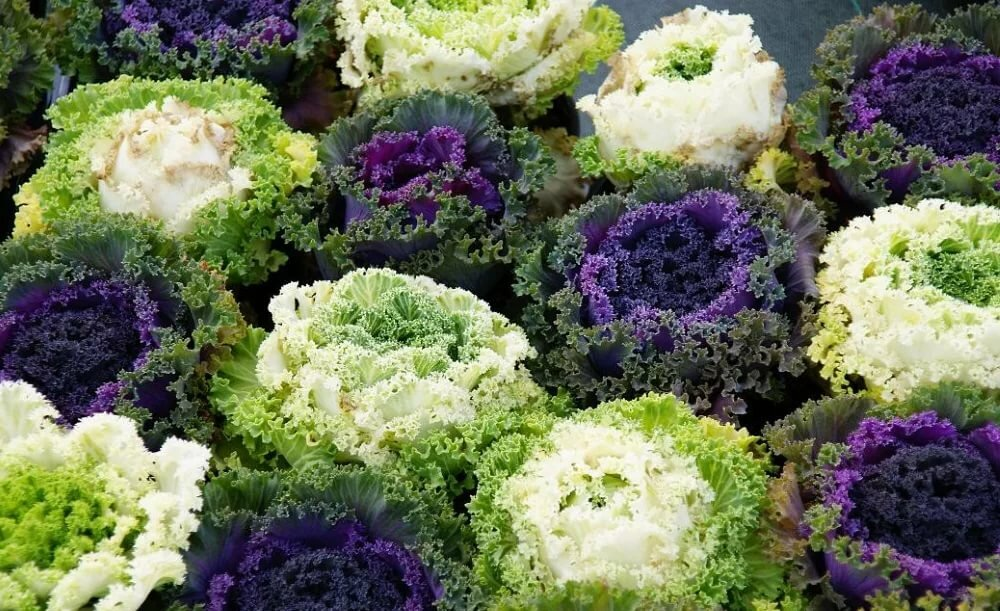
Varieties and hybrids for every taste and color
The ancestor of brassica is garden cabbage, from which numerous ornamental varieties originated. They are divided into two types:
- with a rosette that looks like a large rosebud;
- palm-shaped (keil), which grow up to 1,3 meters.
There is another division, into 5 types. Rather, they describe the general structure of the cabbage:
- cabbage;
- half-cabbage;
- outlet;
- needle-like;
- cerebral.
Name
Size
Description
Kamome Red F1
Height up to 30 cm Corrugated rosette of Kamome red cabbage grows with lower green leaves and upper pink leaves
Osaka Red F1
Height up to 30 cm, width up to 40 cm Osaka cabbage has slightly wavy leaves. The lower ones are gray-green, in the center – bright lilac
Nagoya White F1
Height up to 50 cm Emerald color at the edges, white in the center. Nagoya has very corrugated records.
Peacock White F1
Height up to 25 cm Serrated leaves, which are painted in pearl and green tones
Sunrise F1
Height up to 30 cm A large rosette of Sunrise cabbage looks like a rose. Shades go from light pink to purple
Lark tongue (keil) Height up to 1,2 meters Palm-shaped version. The leaves are curly, long, bright green. Used in cooking
Kai and Gerda F1
Height up to 45 cm Kai and Gerda cabbage can live comfortably in open ground up to -15 degrees. The seeds are mixed, giving a dark purple variety (Gerda) and malachite (Kai)
Tokyo
Height up to 30 cm Rounded leaves, there is a slight waviness. Rosette in colors ranging from green to pink to burgundy
Lace toad F1
Height up to 35 cm Three-color look, openwork, like a collar. It becomes especially beautiful after frost, because the color becomes even brighter
Assol
Height up to 40 cm Lush large green leaves frame the white-yellow center
Caprice
Height up to 45 cm. The dark green color of the outer leaves turns into crimson, very bright. The surface is smooth
Russian circle
Height up to 30 cm This cabbage blooms very beautifully, it can look like various flowers of any color
Piglon
The flower looks like a beautiful cabbage rose, most often creamy or pink-white.
There are other varieties, for example, East colors, Kamome Pink и Peacock tail… Most of them are annuals, although perennial ornamental cabbage comes across if stored in basements until spring.
All these varieties feel equally good in flowerpots and in the garden. Withstand at least -5 and the first snow. If you remove it to the veranda, then at least another month will delight you with a beautiful color.
Planting seedlings
If you are used to growing white cabbage, then with varieties of brassica there will be no problems – the process is very similar. But if you are just starting to work in the garden, then plant ornamental cabbage – it is unpretentious, does not require special knowledge and skills.
If you focus on seedlings, you must:
- prepare containers, fill with fertile soil;
- wet the seeds (you can soak them in plastic cups or small dishes, just putting them in water for 1-2 days);
- sow 1 seeds into the ground to a depth of 2 cm, retreating 5-7 cm from each other.
It’s important: You can buy suitable soil, or you can make it yourself by mixing earth, peat, sand and humus. Add 1,5 cups of ash. Such a mixture will nourish the seeds with the necessary substances for germination, will retain moisture, but will also prevent weak roots from festering.
Growing from seeds is permissible both in a single container and in separate cups. Here, each gardener decides for himself what is more convenient for him.
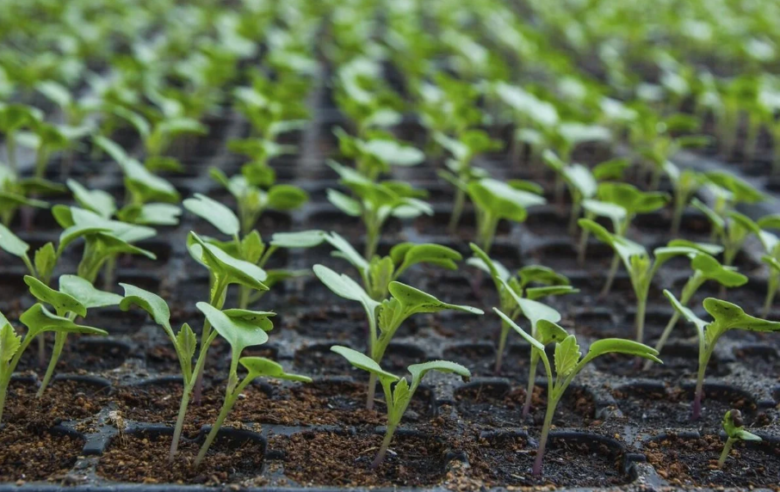 Seedling cabbage
Seedling cabbage
Sowing time for seedlings and planting in open ground
Brassica likes the coolness, so it is better to sow it in mid-April, under a film in a garden bed or in a greenhouse. After that, plant it in the right place, if required. If you want lush, large outlets, it is better to start growing at home, and plant it on the street by mid-March.
Tips for growing seedlings
To grow ornamental cabbage from strong, strong seedlings, certain rules must be followed.
- Before germination, the temperature should be about + 20 ° C.
- After the first week, the temperature is lowered to +10 in the daytime, to + 7 ° C at night.
- When the seedlings have risen, +15 degrees are needed during the day, + 10 ° C at night.
When the sprouts have become taller, the container is rearranged to the sunny side. If there is little light, then turn on the fluorescent lamp.
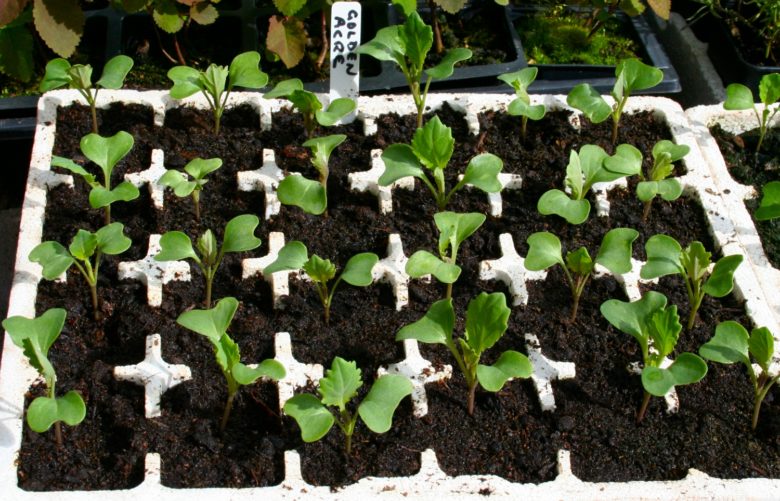 Growing from seedlings
Growing from seedlings
The soil must be constantly moistened. While the container is at home, you can already feed 2 times with a complex remedy:
- on the 10th day after the emergence of sprouts;
- on the 22nd day after appearance.
At the end of April, seedlings can be planted in open ground.
Brassica easily transfers the transplant to the beds, so you can first arrange the plants on a separate site, and move them to the flowerbed closer to autumn, leaving a large lump of soil on the roots.
Planting in a seedless way
In order not to bother with seedlings, in mid-April, you can plant varieties of ornamental cabbage in a greenhouse or just on a plot.
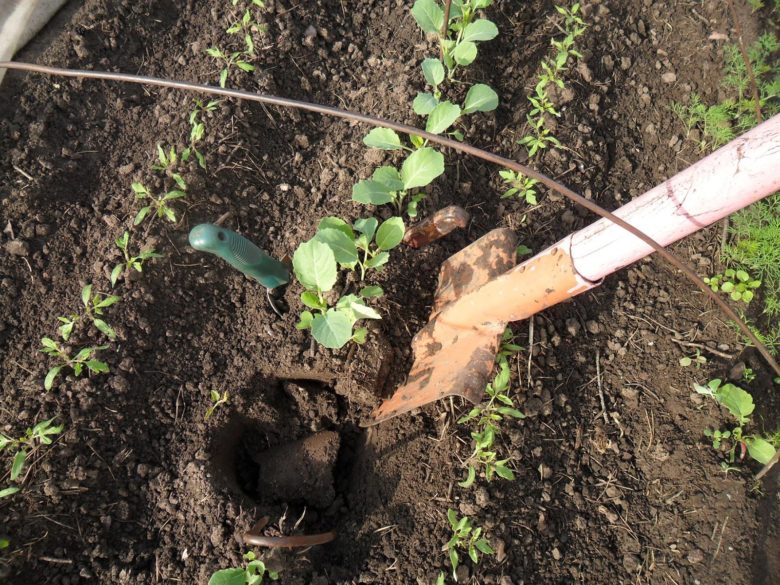 Planting in a seedless way
Planting in a seedless way
- The earth is mixed with humus.
- Add 100 grams of mineral fertilizer, watered with a solution of potassium permanganate.
- Grooves are made no more than 2 cm in depth.
After about 14-20 days, the first shoots will appear. It is too early to shoot the film. As soon as the first leaf opens, you can water the cabbage and feed.
Note: you can use not a greenhouse or film, but cut plastic bottles. The planted seeds are simply covered with them from above.
The shelter is removed around May, when the weather is stable and warm.
Ornamental cabbage. Sowing seeds
Outdoor care and cultivation
Ornamental brassica cabbage grows quietly in a small shade, but much more loves the sun and an open area. In order for the cabbage to bloom, certain conditions must be created for open ground.
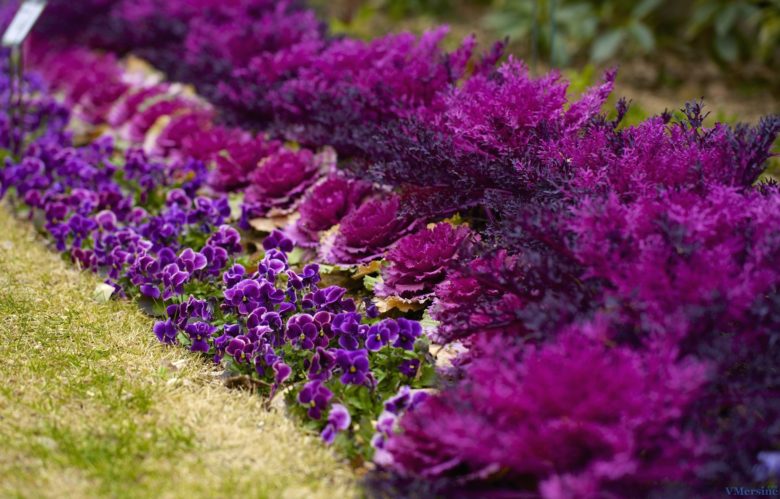 Care for cabbage
Care for cabbage
- Fertilize the soil with compost: 1 square meter bucket, mineral fertilizer.
- Plant seedlings in the holes in a checkerboard pattern. The distance must be at least 30 cm.
- Deepen into the ground until the first leaves appear, compact everything around.
- Drizzle.
It’s important: if the soil is acidic, then you need to add ash (500 grams per square meter) or dolomite flour.
Basically, ornamental cabbage grows well outdoors. Courtship consists of watering and feeding frequently.
Watering, weeding and loosening
Ornamental cabbage is very fond of watering, like all representatives of the Cabbage family. To make the rosette lush, large, you can not deprive the plant of water. But you cannot overfill the soil, otherwise you can cause rotting of the roots.
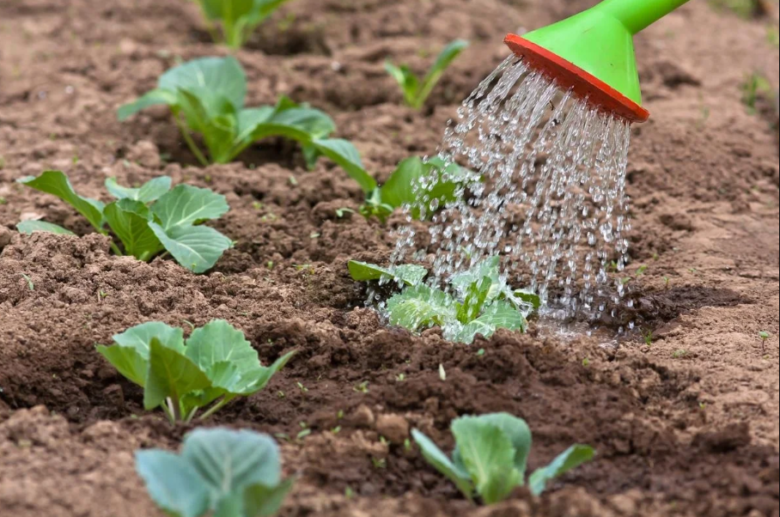 Watering the cabbage
Watering the cabbage
There are a few tricks that can help keep moisture in the ground. It should be added:
- dry grass;
- sawdust;
- shavings;
- straw.
This on-site mulch will also reduce weed growth and the need to constantly loosen between rows.
Cabbage is watered about once a week if it rains. If there is drought, then more often. The calculation is as follows: a bucket per adult plant.
Note: Water the brassica in the evening or in the morning to help the moisture evaporate less. Then loosen at the roots so that they get air.
If the cabbage grows in flowerpots, then water it every day. In case of heat, it is permissible to spray the leaves.
Application of fertilizers
Brassica is very fond of feeding. During the season, you can spend up to 5 dressings and not be afraid to harm the cabbage. But, of course, one should focus on the fertility of the land.
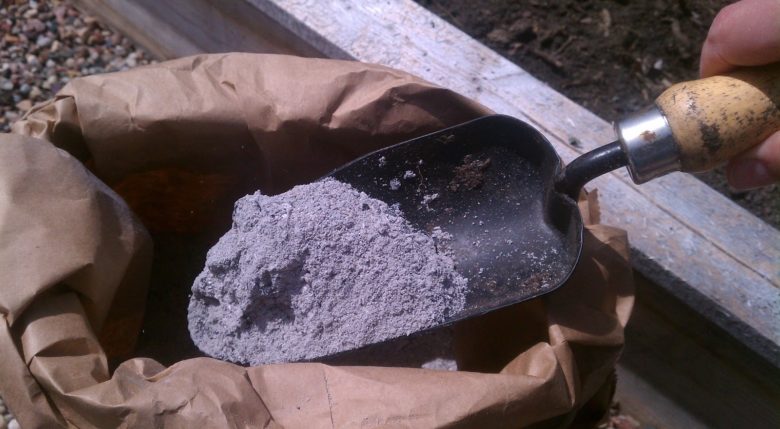 Fertilizing cabbage
Fertilizing cabbage
Mostly used organomineral, mineral products. The main thing is not to overdo it with nitrogen in the preparations, otherwise the green color in the leaves will not change to a colored one.
It’s important: if the land was intensively fertilized with manure, then the plants will be more powerful, larger, but they will lose their unique color. Most of the leaves will be a normal green color.
When 14 days have passed since planting on a flower bed or garden bed, top dressing should be done.
Fertilizer
Calculation
Slurry 1 in 10 Ash 500 grams per bed Azofosk 60 grams per 1 liter Nitroammofoska 10 grams per 1 liter Urea 30 grams per square meter Saltpeter 40 grams per square meter
Repeat feeding after about 3-4 weeks.
But the best mixture before feeding is a combination:
- 20 grams of superphosphate;
- 10 grams of ammonium nitrate;
- 10 grams of potassium chloride.
This whole mixture is diluted in 10 liters of water.
Disease Prevention
Brassica is susceptible to fungal diseases due to the fact that it is very fond of water. Therefore, it should be watered with warm water and settled in the fresh air. You can moisten the soil both in the classic way “a bucket under the root”, and from a watering can to wash the leaves.

If the soil is too waterlogged and watered with cold water, then the cabbage will be more susceptible to pests, mainly fungus, powdery mildew and rot.
It’s important: if the soil is low Rnthen the plant will suffer from the keel. So do not neglect deoxidation.
If you follow all the tips, give the required care, the brassica will not hurt. But the so-called “black leg” is especially dangerous, especially for seedlings. The stem below begins to blacken and rot. There are some tried and true tips to prevent this from happening.
- Process seeds and soil before planting.
- Treat the sprouts with Fitosporin solution when the first pair of leaves appears.
- If the “black leg” appears, then the plant is removed and all the soil is replaced, the new one is treated with a Bordeaux mixture.
Watering too much in the heat will cause peronosporosis. In plants, brown spots appear on the leaves, and a gray bloom appears on the bottom. To save cabbage, they are treated with Fitosporin every 10 days (3 grams per 5 liters) or powdered with ash (50 grams per square meter).
Gardeners can easily avoid most of the problems by constantly hilling. At the same time, wood ash and sand are added to the ground.
Pest control
The varieties of cabbage are loved by caterpillars, scoops, butterflies, white beetles, aphids, slugs, cruciferous fleas and other pests. All of them are attracted by juicy tasty pulp.
The following means are used:
- Quadris;
- Bicol;
- Tiovit Jet;
- Aktara;
- Decis;
- Fundazol.
It’s important: if the plant is too damaged, then it is better to remove it from the garden so that neighboring sockets do not become infected.
If several specimens are infected, and the attack becomes widespread, then two chemical agents are used;
- Anabazine, 10 grams per 10 liters;
- Bitoxibacillin, 40 grams per 10 liters.
There are also folk methods. For example, spraying with decoctions of chamomile, wormwood, ash solution.
Spraying with tobacco dust shows itself well.
- Pour 2 cups of tobacco dust with 5 liters of hot water.
- Leave for a day.
- Strain.
- Add 2 spoons of soap.
You can moisten the leaves with this solution and as a preventive measure every 2 weeks. This drastically reduces the risk of pests.
How to grow beauty
Reproduction
At the end of summer, cabbage turns from ordinary, green, beautiful and colored – purple, white, pink, lilac. And the lower the temperature drops, the brighter the shades appear.
 Reproduction of cabbage
Reproduction of cabbage
Cabbage propagates by seeds, but you need to wait for spring. By the end of the season, brassica remains the only decoration for the garden, calmly enduring the first frosts and even snow. But if you want to admire this plant even longer, then you can transplant part of it into flowerpots or pots. With watering and coolness on the veranda, the brassica will flourish for another month or two.
After that, you can cut off the outer leaves and place them in a pot of wet sand together with a lump of soil. The stems should be filled up to the leaves.
- The box is removed to the basement or garage.
- Store until spring.
- They are planted in the beds and fed.
- In the summer, you need to collect seeds.
They can be used for planting for 5 years.
Using ornamental cabbage
Most often, ornamental cabbage is used to decorate the site, but it is quite suitable for eating. You can cook from it:
- salads;
- soups;
- stews;
- stuffed cabbage.
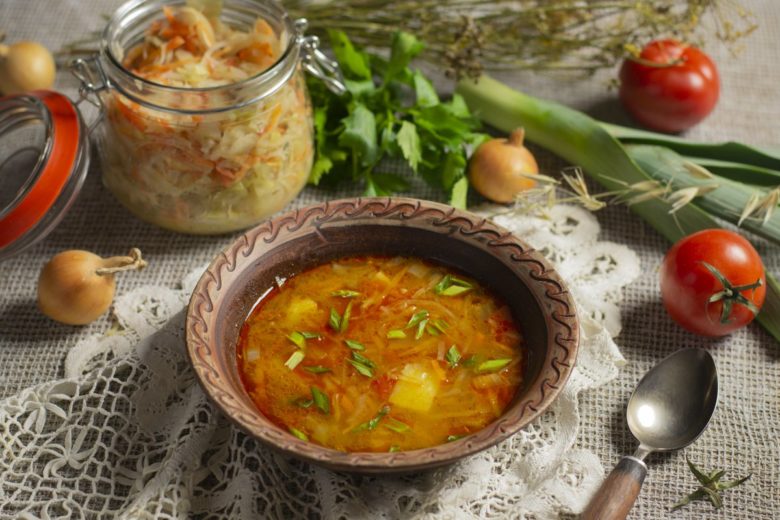 Cabbage soup
Cabbage soup
Many people like to cook with brassica precisely because the dishes are very interesting in color. For example, pink cabbage soup or purple cabbage rolls. This can also lure children who do not always like to eat vegetables.
Note: If the leaves are bitter, they need to be put in the freezer for a short time and then used in cooking.
Another area of application of edible ornamental cabbage is floristry. From it they create original compositions and bouquets, especially of autumn themes.
- Cut at the root.
- Placed in a vessel with water.
- Add citric acid or potassium permanganate, sugar.
If you change the water in the vase from time to time, then the brassica will stand for at least a month.
Therefore, when asked whether it is possible to eat ornamental cabbage, the answer is yes. Salads, cabbage soup, cabbage rolls, stewed vegetables are prepared from young leaves. To get rid of the bitterness, the leaves are frozen and thawed before use.
Application in landscape design
The bright, catchy plant looks great with other flowers. Most often, ornamental cabbage in landscape design is used to decorate borders, in hanging pots, flowerpots. Ornamental cabbage in a flower bed looks impressive.
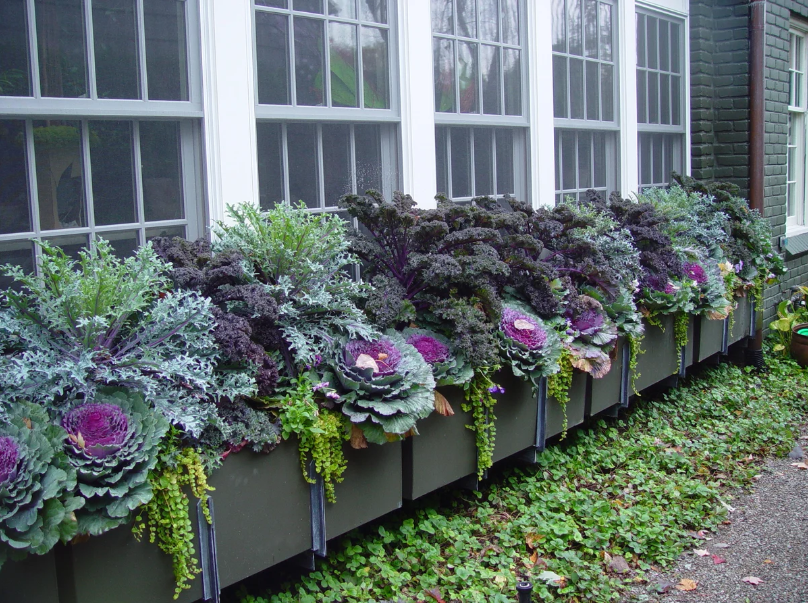 Cabbage in landscape design
Cabbage in landscape design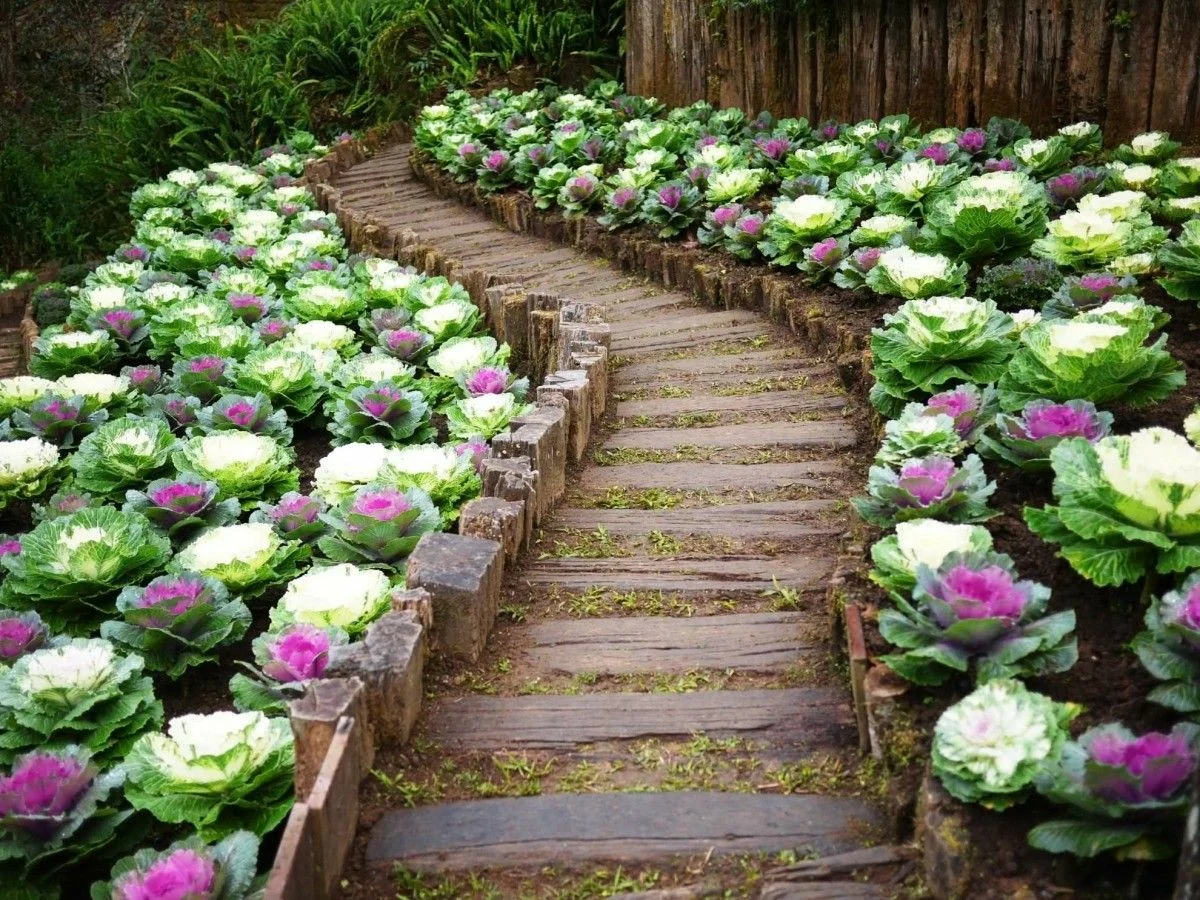 Path decorated with ornamental cabbage
Path decorated with ornamental cabbage
But even alone, brassica looks beautiful. To get a mono-flower bed, you can plant different varieties, with different colors. Since the rosette reaches 0,5 meters, a few plants are enough:
- place palm varieties in the center (“Lark’s Tongue”);
- rosette at the edges (“Moskhab”);
- combine curly versions with each other (“Red curly” and “Green curly”).
Note: a great option is to plant marigolds around the cabbage. They bloom for a long time, up to frost, set off cabbage and scare off harmful insects with a pronounced odor.
Designers have come up with many options for the location of the brassica.
- Framing tracks using several varieties that contrast in shade with each other. For example, magenta with white. It turns out a lace mosaic.
- Low-growing plants are used for carpet and modular beds, alternating with tiles or stone.
- Planted around a terrace or veranda.
- Vases with cabbage are installed, placing it around the perimeter of the pot, framing irises, gladioli, lilies.
- Think over multidimensional flower beds with additional design.
Multidimensional flower beds look very beautiful, like a bright waterfall of different colors. They create it with a few steps:
- make a cone from a coarse mesh, fix;
- fill with soil;
- plant cabbage seed in the cells.
The main principles are to combine shades and play on contrasts. Then you get a unique composition.
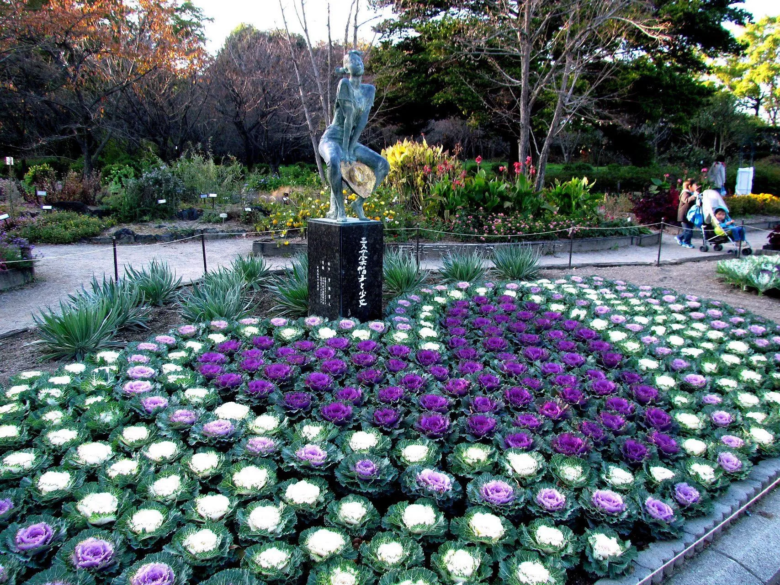 Ornamental cabbage in the flowerbed
Ornamental cabbage in the flowerbed
Conclusion
Wild cabbage is an amazing plant that has been used as a decoration since the time of Ancient Greece. The beautiful, bright color of the rosette attracts attention, sometimes you just can’t believe that there is ornamental cabbage in front of your eyes. Growing is not a troublesome business, and the main plus in numerous varieties is that this cabbage blooms until winter, pleasing the eye. Along with such a cabbage, you can grow decorative onions on your site.
How to grow ornamental cabbage from seeds


